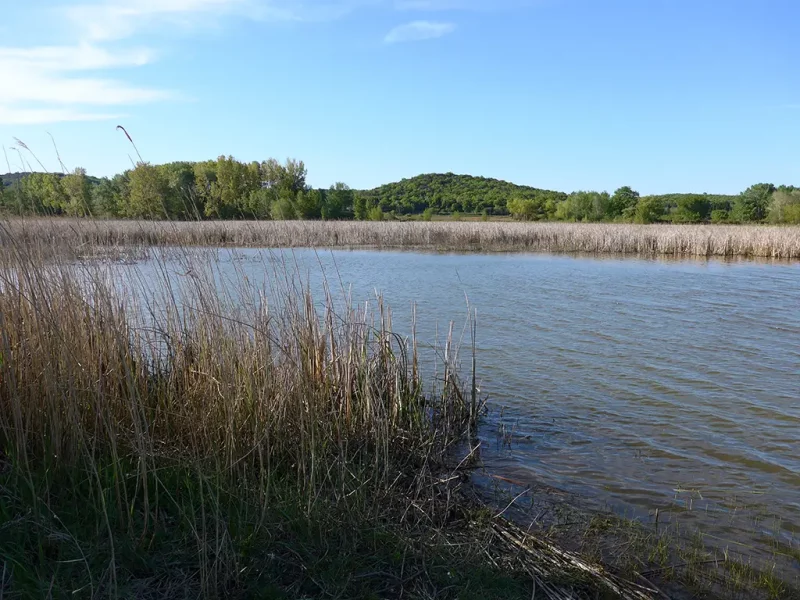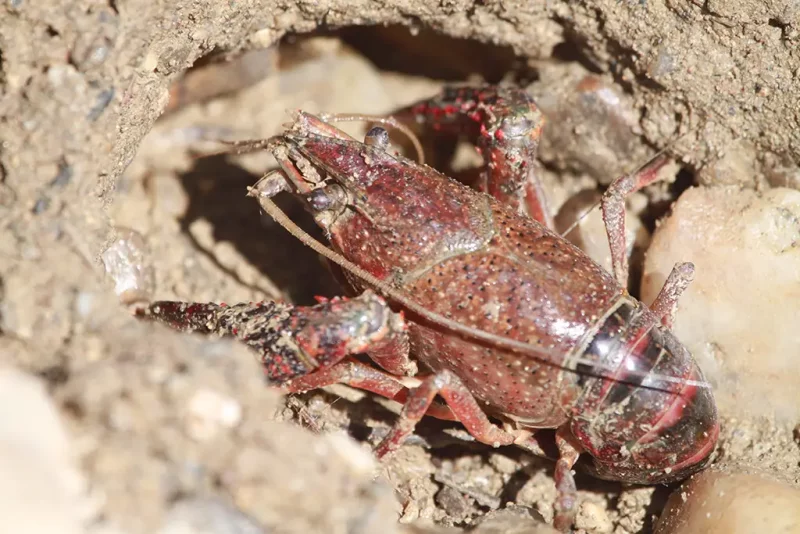Introduced in France in 1976 for human consumption, the Louisiana crayfish is now recorded in 70 departments, versus 61 in 2006. Highly adaptable, omnivorous and opportunistic, the Louisiana crayfish interacts with amphibians, in different ways: predatorily, aggressively, competitively, etc.
Beyond the damages brought to the local species, the species damages the riverbanks and has an impact upon the functioning of the ecosystems it colonises, leading to a delicate balance typical to the retreat of vegetal communities and macro-invertebrates.
The presence of Louisiana crayfish in the La Capelle pond and puddles site has been acknowledged and monitored in said pond since 2009. The protocol has been updated in 2017 in order to explore all of the plateau’s puddles, on the west side of the Natura 2000 site. A total of 10 puddles have been inhabited at least once by the species since the monitoring started.
Since 2018, it has been stated that the presence of this crustacean has significantly increased within the pond, especially in the fishing area. This phenomenon follows the complete and extensive draining that had caused that year the disappearance of a whole fish population, including carnivorous fish that were actively involved in limiting this alien invasive species population.

